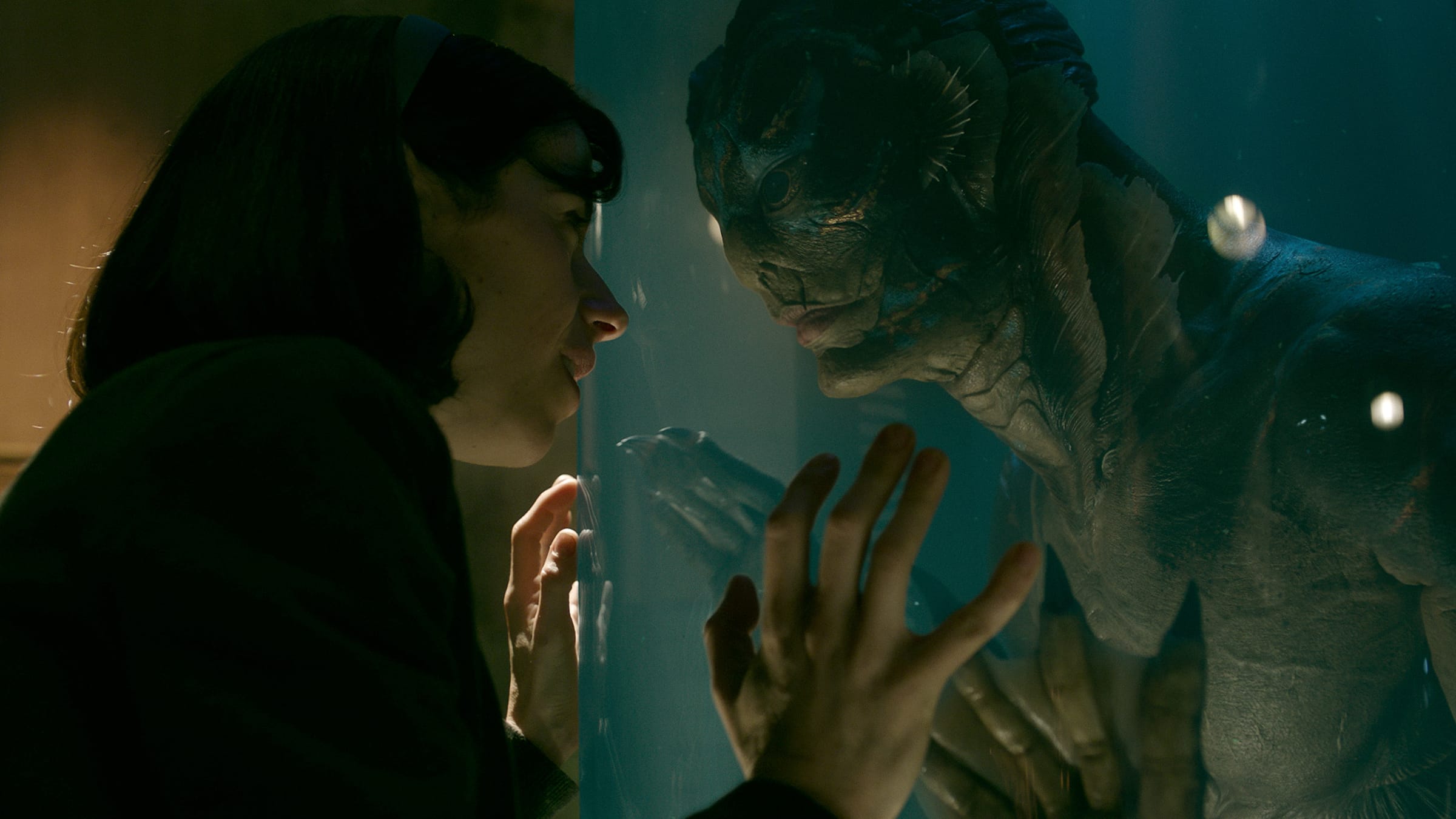RELATED ARTICLE
Guillermo del Toro’s Pinocchio: Sculpted to Life
The Criterion Collection

In one memorable scene in Guillermo del Toro’s The Shape of Water (2017), two raindrops dance in perfect synchrony on a window of a moving bus. Though they appear to obey the laws of physics, to our eyes, desperate for meaning, their encounter doesn’t appear random—instead, it seems orchestrated by the cosmos. This poignant image encapsulates the themes of fate and chance that run through del Toro’s entire filmography, a body of work filled with meetings between the mundane and the otherworldly that feel at once accidental and perfectly timed.
“Life is but the shipwreck of our plans,” reads an adage on the back of a page that Elisa Esposito (Sally Hawkins) rips out of a calendar. A mute woman who works as a janitor at a secret government laboratory in the 1960s, she has just had her own brush with destiny. In an earlier scene, while performing her cleaning duties, Elisa meets a nameless, supernatural creature held captive in the facility—a river-god who looks part man, part amphibian. She later learns that officials in the United States want to study and then destroy him before he falls into the hands of the Soviet Union.
Lacking a shared language with the creature, Elisa first tries to make his acquaintance by offering him a hard-boiled egg. The two soon recognize that they are both voiceless in a world eager to discard them. As they cautiously get to know each other—their gestures and mannerisms, their sounds and silences—their unexpected connection unfolds as if it were kismet.
In del Toro’s universe, such encounters are often occasioned by tragedy. Many of the director’s characters are broken people who find solace in the companionship of a nonhuman being. Living in the aftermath of the Spanish Civil War, the young heroine of Pan’s Labyrinth (2006) enters a mystical realm under the guidance of a faunlike creature. In Guillermo del Toro’s Pinocchio (2022), Geppetto, mourning the death of his son, discovers a new beginning in a wooden boy brought to life by magic. And in The Shape of Water, misfortune brings together the central pair of misfits: if the Amphibian Man (as he is named in the closing credits) had not been kidnapped from his original habitat in South America, he would never have entered Elisa’s world. All of these films feature protagonists who embrace a kind of otherness, daring to reach out into the unknown despite the wounds of their pasts.


